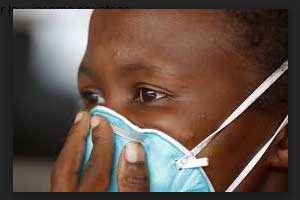- Home
- Editorial
- News
- Practice Guidelines
- Anesthesiology Guidelines
- Cancer Guidelines
- Cardiac Sciences Guidelines
- Critical Care Guidelines
- Dentistry Guidelines
- Dermatology Guidelines
- Diabetes and Endo Guidelines
- Diagnostics Guidelines
- ENT Guidelines
- Featured Practice Guidelines
- Gastroenterology Guidelines
- Geriatrics Guidelines
- Medicine Guidelines
- Nephrology Guidelines
- Neurosciences Guidelines
- Obs and Gynae Guidelines
- Ophthalmology Guidelines
- Orthopaedics Guidelines
- Paediatrics Guidelines
- Psychiatry Guidelines
- Pulmonology Guidelines
- Radiology Guidelines
- Surgery Guidelines
- Urology Guidelines
New cost effective test developed for Tuberculosis

Dr Jesse Kwiek, an associate professor of microbiology at The Ohio State University has reported the development of a low-cost, easy-to-replicate test for tuberculosis. It might help developing nations better identify and treat the deadly disease and could be easily employed in areas with a high incidence of tuberculosis. The study was published in the African Journal of Laboratory Medicine.
The TB CX-test is designed to not only detect tuberculosis but to determine whether the infecting strain is resistant to any of antibiotics used to treat it. In this study of 96 people at high risk of TB, however, drug-resistant forms of the disease were not detected, and further studies are underway to assess the role the inexpensive test could play in identifying the best route of treatment, Kwiek said.
The new diagnostic test provides more information than the most commonly run test worldwide, in which phlegm is spread on a slide and examined later for TB, Kwiek said, but isn’t as expensive as more-costly gene-based diagnostic testing that is rarely found in low-income and middle-income countries. This new $2 CX-test is fast, effective and cheap and enables clinicians to know about drug resistance up front so that they can personalize treatment,” Kwiek said.
“The diagnostic approach that is typically used in the field doesn’t tell you anything about drug susceptibility, and knowing that is key to effectively treating infections of antibiotic-resistant tuberculosis,” Kwiek said.
To run the new experimental test, a health care provider collects a phlegm sample from the respiratory tract of a person with suspected tuberculosis and uses a dropper to place samples in four compartments on a round plate. After about 10 days to two weeks in a temperature-controlled environment, TB (if present) bacteria show up in at least one quadrant.
Each of the other three quadrants (which is colour coded) contains one of three antibiotics used to treat the infection: ciprofloxacin, isoniazid or rifampicin. If the bacteria grow in any one or more of those three compartments, the test shows that the tuberculosis is resistant to one or more common treatments. The test was developed by study co-author Carlton Evans of the Imperial College of London and Cayetano Heredia University in Peru.
The new study showed that the test was simple to use in the field and that it reliably found TB cases – 13 in this study – that was later confirmed by advanced testing.
“Close to a quarter of the world’s population is infected with tuberculosis, representing 1.9 billion people – 10 percent of whom will develop active TB in their lifetimes,” said Jordi Torrelles, the study’s lead author and a former associate professor of microbiology at Ohio State who now works at the Texas Biomedical Research Institute.
“We need better tests to diagnose TB and address which treatments will be most successful,” he said.
Experiments in countries with a high prevalence of drug resistance will need to be completed before the tuberculosis CX-test could be put into widespread use.
“This is important when you consider that current culture techniques used to detect drug resistance take two to three months to provide results in low-income countries,” Torrelles said.
Tuberculosis is a bacterial infection that usually attacks the lungs, but also can harm other parts of the body, including the kidney, spine and brain. According to 2017 estimates from the World Health Organization, an estimated 4,000 people die of tuberculosis each day worldwide.

Disclaimer: This site is primarily intended for healthcare professionals. Any content/information on this website does not replace the advice of medical and/or health professionals and should not be construed as medical/diagnostic advice/endorsement or prescription. Use of this site is subject to our terms of use, privacy policy, advertisement policy. © 2020 Minerva Medical Treatment Pvt Ltd